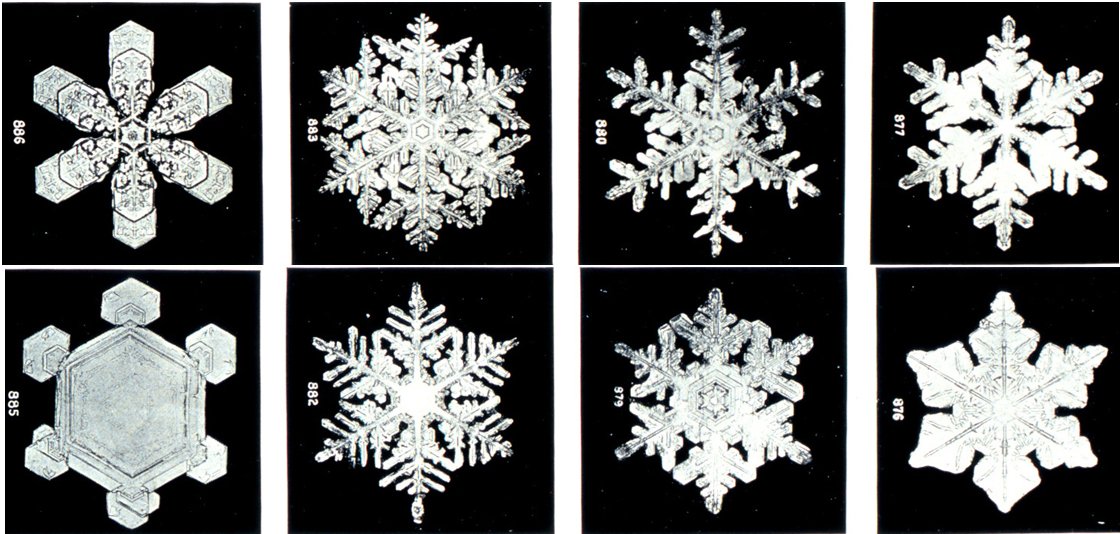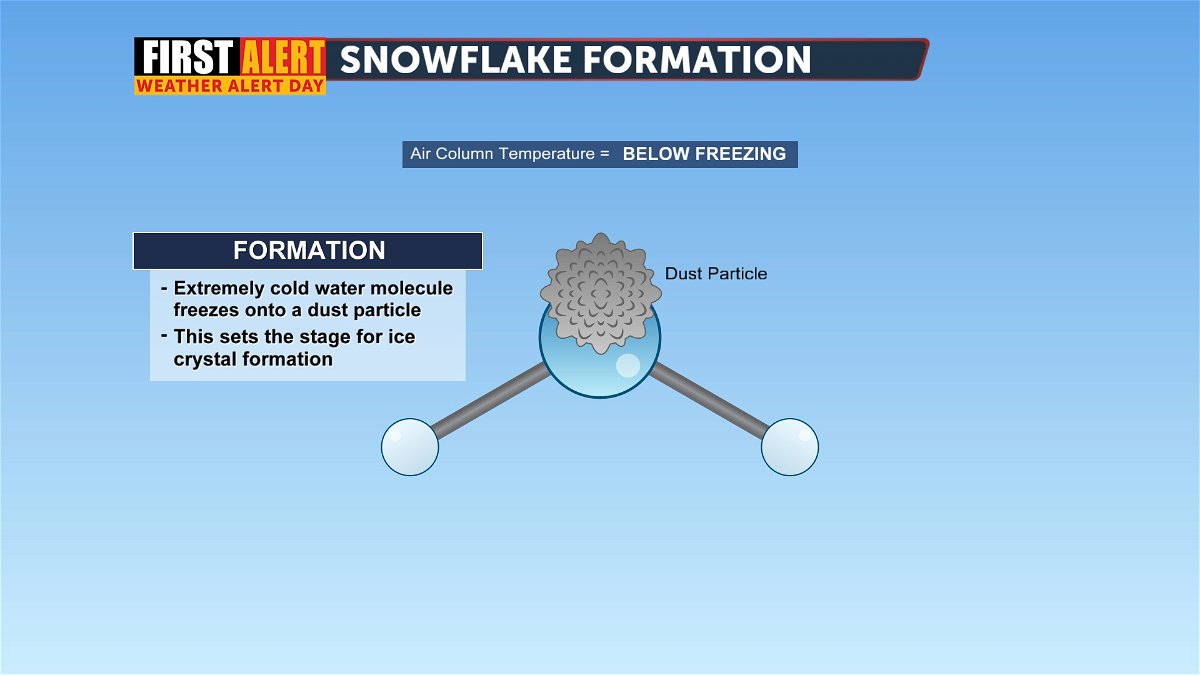Insider Blog: How a snowflake forms
We've all heard that no two snowflakes are alike, and that's not wrong. But there are a multitude of types of snowflakes. Just like how there are pine trees, palm trees, and oak trees, there are plate snowflakes, column snowflakes, cup snowflakes, and more.

The process begins when very cold water droplets interact with a particle, like dust. This causes the water molecule to freeze, forming an ice crystal.

The ice crystal can now serve as a foundation for other water molecules to freeze onto. As a result of how water molecules bond together, a hexagonal shape will start to form.

As more water molecules freeze, the snowflake gets bigger. This allows even more water molecules to freeze and so on.

Depending on the specific environmental conditions (temperature, moisture content, etc.) arms known as 'dendrites' can form.





